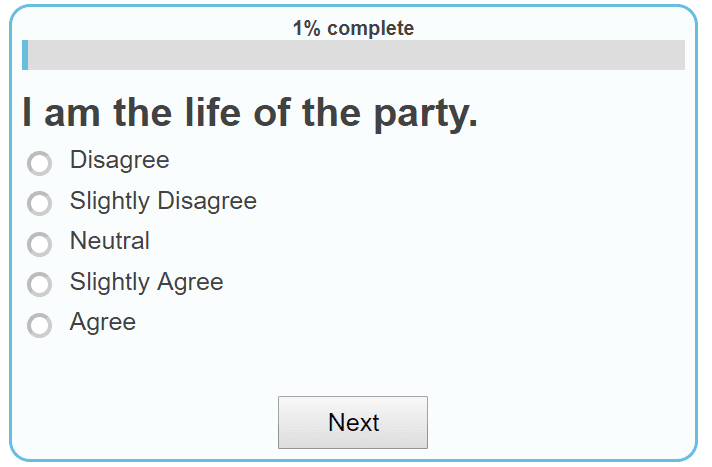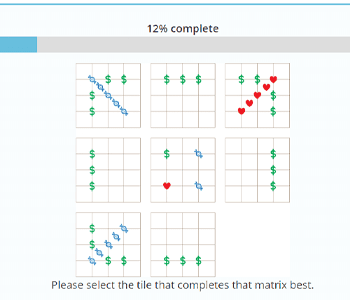Sleep helps the body with everything from memory storage to weight loss. Optimizing your sleep can significantly improve both your physical and mental well-being. Ensuring you go through the sleep stages correctly is essential.
What Are Sleep Stages?
The 4-5 stages of sleep are different types of sleep in which our bodies perform certain functions or even sit at different temperatures. The longer we sleep, the more stages we go through. We enter these sleep stages multiple times by sleeping for more than two or three hours.
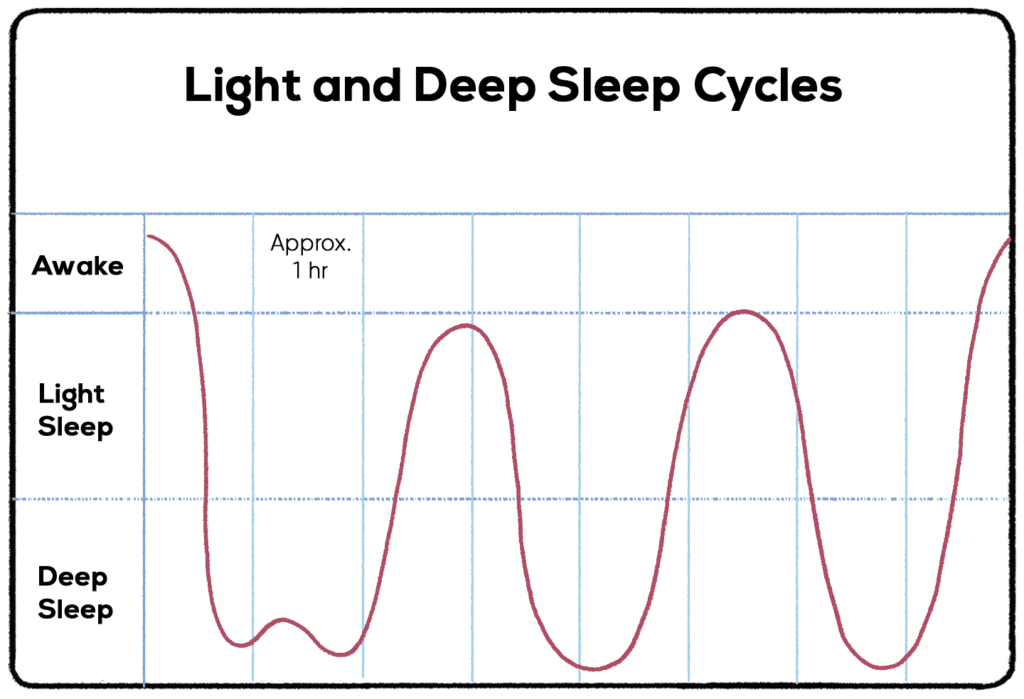
Why Are Sleep Stages Important?
Sleep is an essential part of our day. We don’t just need it to feel awake - we need it to function. During sleep, our mind processes everything from the previous day. Our muscles relax and reset. We release growth and other hormones that set us up for the next day.
The body needs time to get into the groove of sleeping and perform all these tasks. It takes up to 90 minutes to enter REM sleep, or the deepest level of sleep, where we start dreaming. We might feel thrown off our groove if we wake up during one of these cycles. You’ve probably experienced a morning when you woke up and felt extra tired, even though you slept well. The explanation might be that your sleep cycle was interrupted.
Basics of Sleep Stages
While there are 4-5 stages of sleep, the body goes through two main stages. NREM (non-rapid eye movement) and REM (rapid eye movement.) These names are self-explanatory. During the NREM stages (Stages 1-3 or 4,) the eyes are not rapidly moving underneath your lids. During the REM or the cycle's last stage, your eyes rapidly move underneath your lids. It sounds freaky, but it’s the truth!
Each sleep cycle lasts between 90 and 120 minutes and goes through these four stages. At first, the body is only in the REM stage temporarily. As the night progresses, your body is in the REM stage for longer periods. This is a key explanation for why four hours of sleep may appear enough, while seven to nine hours are ideal.
The body spends approximately 25% of its sleep time on REM sleep. Throughout the remaining 75% of the night, it alternates between deep sleep phases:
- Deep sleep
- Light sleep
- Wakefulness
Let’s go through these cycles.
Wakefulness
We’ll start by talking about wakefulness. The body will take cues from your mind and environment and prepare for sleep. You might wake up after a sleep cycle at some point during the night. This is completely normal.
It’s also normal to have strange sensations as the body transitions into sleep. About 10% of the population experiences “hypnagogic hallucinations” as they start to fall asleep. These hallucinations can be quite scary if you don’t know what they are. You might hear someone calling your name or might even smell something. While unsettling, these hallucinations are normal. They might be caused by alcohol or anxiety, so reach out to a sleep specialist if they are starting to disturb your ability to sleep.
The brain is doing a lot as you transition through the sleep cycle. While awake, the brain emits “beta waves” to keep you alert. As you transition to light sleep, these brain waves slow down. You start to emit “alpha waves.”
Light Sleep
Once you enter the “light sleep” stage, your brain emits “theta waves.” These brain waves are even slower.
At this point, the body is starting to slow down. The breathing slows. Blood pressure begins to drop. Body temperature starts to drop.
Another strange event might occur during this stage. Has anyone ever told you that you twitch while you sleep? It usually happens during this stage of sleep. It’s called a “hypnagogic jerk,” and it’s very common! This “jerk” may make you feel like you’re falling. You may wake yourself up from one of them. Your significant other may make fun of you for them!
Why do these occur? There’s no real clear explanation. Like hypnagogic hallucinations, anxiety or medication may increase the likelihood of these occurring. Some evolutionary psychologists have theorized that hypnagogic jerks are an evolutionary function - they were a way for primates and early humans to adjust to sleeping in a tree or other location outside.
Jerk or no jerk, the body spends about half of the night in this stage of light sleep. Then, it moves to deep sleep.
Deep Sleep
Deep sleep is the most restorative part of the night. At this point, the respiration slows further, and the muscles relax. This reduced tension allows the body to get to work. The blood flows easier to the muscles, hormones are released, and tissues begin to repair.
Up in the brain area, delta waves are starting to move through the brain. These are the slowest waves that the brain generates. During deep sleep, you don’t experience any dreams.
At this point, the body may also be going through a “detox.” That’s right. Studies are still looking at how the body detoxes during deep sleep, but the results suggest that this could be what’s happening. Who needs a detox tea when you’ve got a good night’s sleep?
If you worked out the day before, you might be more often in the deep sleep stage. Otherwise, we only spend about 15% of our night in deep sleep.
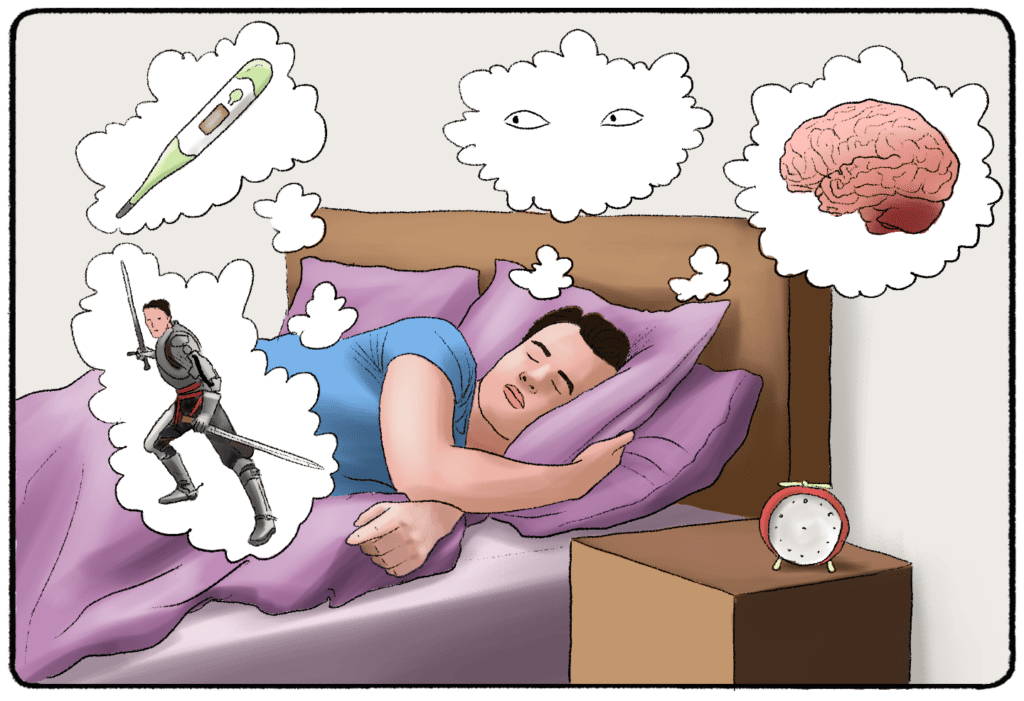
REM Sleep
Wakefulness, light sleep, and deep sleep are all NREM sleep stages. This final stage, REM sleep, is when the eyes rapidly move underneath the eyelids.
The muscles are completely relaxed during this stage of sleep, but the brain is moving a lot faster. This is the stage of sleep when you typically experience dreams. The respiration also increases during REM sleep.
REM sleep is also known as “active sleep” or “paradoxical sleep.” It’s paradoxical because while the body seems “paralyzed,” the mind is certainly not.
If you’ve ever experienced sleep paralysis, you know just how “paralyzed” the body is at this time. Sleep paralysis occurs when the mind becomes conscious, but the body is still in REM sleep mode. Try as hard as possible; you cannot move your limbs or yell out. You may also project your dreams onto what you are seeing, which is why some people claim to see demons or other figures in their room while in sleep paralysis. It’s pretty freaky.
REM sleep may last up to an hour but progresses as the night progresses. We spend about 25% of our time in REM sleep, dreaming away.
Can You Skip Sleep Stages?
Moving through these stages is crucial if you want to get a good night’s sleep and wake up on the right side of the bed. The body has an instinct to sleep and move through these cycles, and cues outside of the body can easily disrupt any of these stages. Prepare yourself accordingly for sleep, and you’ll get the most out of your 7-9 hours.
Understand Circadian Rhythms
The four stages of sleep are not the only cycle our body goes through. Bodies naturally develop a 24-hour Circadian Rhythm that moves through different stages of wakefulness and fatigue. Have you ever noticed that you feel more tired than normal in the afternoon? Or that the sun gets you up in the morning? You can thank your Circadian Rhythm.
Your body uses external cues to move through these stages. And this has happened for centuries. Before electricity, our Circadian Rhythms relied mostly on the sunrise and sunset to prepare the body for sleep and wakefulness.
Nowadays, we spend our nights looking at bright blue lights, even when we are about to sleep. I’m talking about your phone, the television, or your laptop. This light stops your body from producing melatonin, which helps you go to sleep.
To get better sleep, you’ll have to eliminate some bad habits. Limit your blue light intake before bed. Turn off your laptop and stop scrolling at least one hour before bed. Wear blue light-blocking glasses. Switch out your Kindle for a paperback book.
You’ll fall asleep faster without the blue light and the distractions. By falling asleep faster, you spend more time in each sleep cycle and preparing the body for the next day.
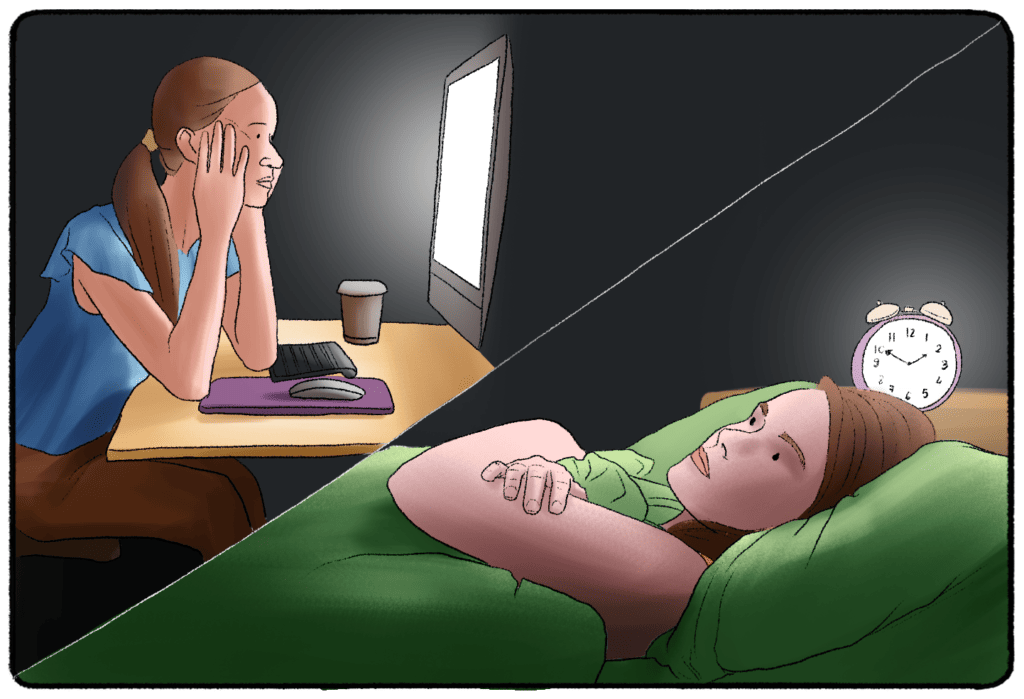
Resources
You can also log into an app (but don’t scroll!) to help you get to sleep and wake up during the right part of your sleep cycle.
Sleep Cycle App
The Sleep Cycle App, for example, is an app that works a little differently than most alarm clocks. It asks for a 10-to-45-minute window rather than one time to wake up. As you sleep, the app tracks which cycle you’re in and wakes you up when it’s easiest for you to transition to wakefulness. You can also look at your chart the next morning and see how long you spent in deep sleep.
Insight Timer
While Insight Timer doesn’t track your sleep cycles, it can help you transition from wakefulness to sleep. This app provides guided meditations, binaural beats, and other resources to help you sleep. Some of the tracks on Insight Timer are intended to encourage the production of theta or delta brainwaves.
Medical Professional
Disorders like insomnia or fibromyalgia may also impact your ability to enter REM sleep. If you are having trouble sleeping, it may be time to talk to a doctor. Blue light is far from the only thing affecting a person’s ability to sleep. Anxiety, medications, diet, and routine may also be contributing factors. If you are having trouble sleeping, keep track of how much sleep you get and bring this information to your doctor. They may suggest lifestyle changes, medications, or further testing to help you get more sleep at night.
